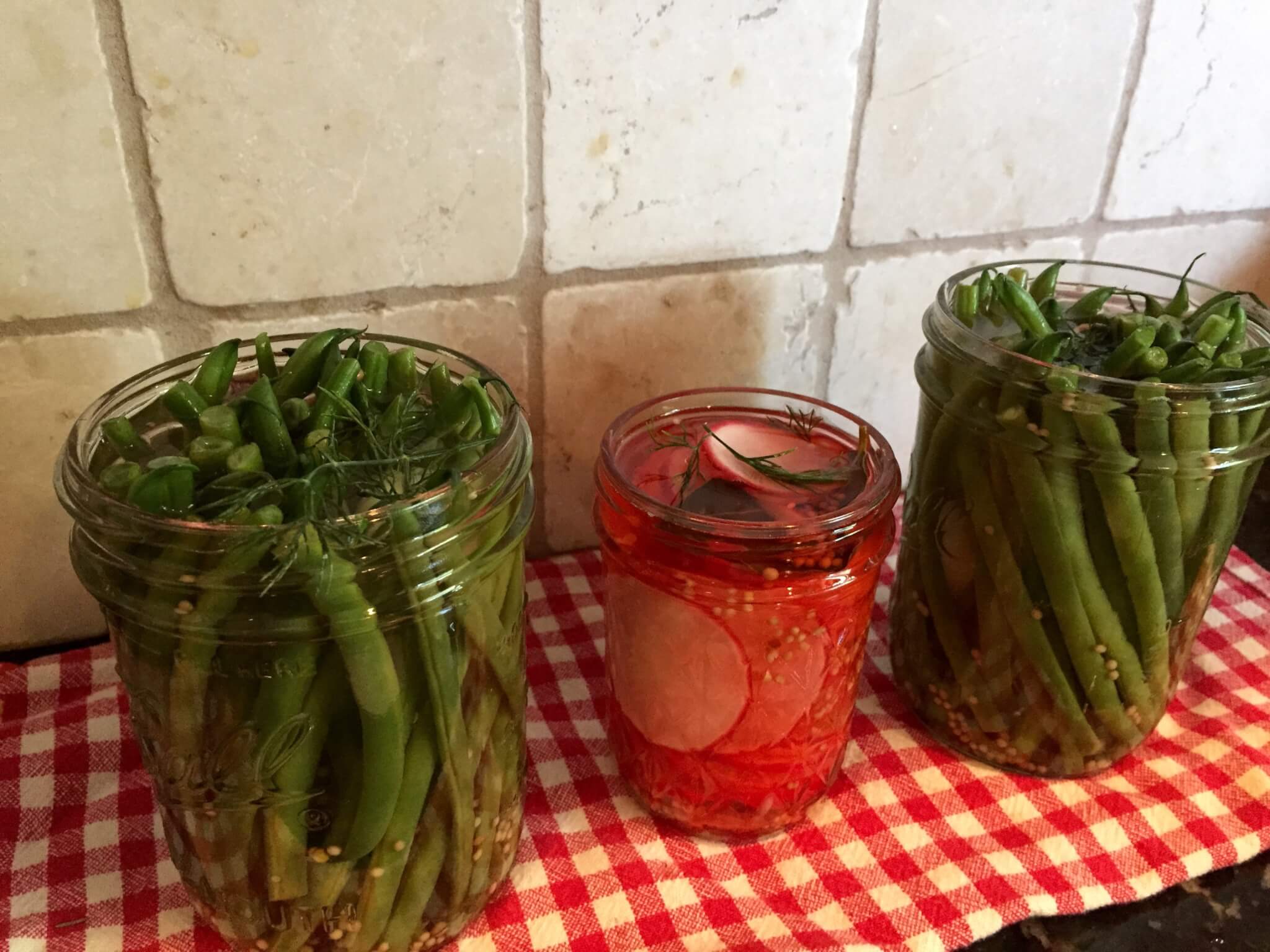
What’s in Season Now: Pickling!
What’s in Season Now: Pickling!
As August breathlessly comes to an end, smothering us in a blanket of oppressive heat and humidity, the weather beckons me to stay indoors and put up pickled jars of cool, crisp, just-picked produce. If summer’s harvest moon has turned you into a locavore, you’re eagerly devouring the still-abundant delights of the season; tomatoes, eggplant, collards, corn, radishes, broccoli, and beets to name a few. Somehow though, when September rolls along, my heart aches a bit because I know the end of our local growing season is nearing. Until then, I find that pickling some of the seasonal treasures helps me to hold onto summer a little longer.
If you think pickling is for pros, hold your horses! Quick pickling is really simple and should not induce fear of botulism! Here’s the skinny on making super-tasty treats that you can store in the fridge for up to a month. You’ll need 6 pint-sized mason jars for the quantity in the brine recipe below.
Prepare your vegetables. Wash, trim, and cut vegetables into desired size. Some vegetables are better if blanched first; think green beans, carrots, and beets. (Blanching is a simple cooking process where a food, usually a vegetable or fruit, is plunged into boiling water, removed after a brief, timed interval, and plunged into iced water or placed under cold running water to halt the cooking process. Vegetables like zucchini, tomatillos, cucumbers, and radishes don’t need to be blanched.
After prepping, divide your veggies among the jars and add some flavorings. I used what I had on hand from my garden and spice cabinet; celery seed, mustard seed, crushed red pepper flakes, fresh dill from the garden, sliced shallots and peeled garlic cloves. Feel free to experiment and don’t be afraid to mix and match.
Make the brine – sweet or sour, depending on your taste:
Sour: Combine 3 cups distilled white vinegar (or cider vinegar), 3 cups water, 2 tablespoons plus 2 teaspoons sea salt and 2 tablespoons sugar in a large saucepan. Bring to a boil and stir until the salt is dissolved. Let boil for 2 minutes, or until the sugar is dissolved. Remove from the heat. Makes: 6 cups.
Sweet: Combine 3 cups distilled white vinegar (or cider vinegar), 3 cups water, 1 1/2 cups sugar and 1 tablespoon plus 1 teaspoon sea salt in a large saucepan. Bring to a boil and stir until the salt and sugar are dissolved. Let boil for 2 minutes. Remove from the heat. Makes: 6 cups.
Fill jars with brine to within 1/2 inch of the top of the rim, covering the vegetables completely. Discard any leftover brine. Place the lids on the jars and refrigerate for at least 24 hours before serving.
So what do you with your pickled veggies? Here’s a few things I’ve been doing with mine;
 I used pickled spiral-cut zucchini noodles on top of tacos to punch up the taste. My pickled radishes were perfect on afternoon avocado toast – really brightened up a nearly perfect snack. We took our pickled green beans along to a pool picnic and ate them instead of chips and pretzels as a healthy snack. And because I love to share the goodness of farm-fresh foods, I gave away jars to family and friends to try. There’s something so delightful about making your own pickled veggies, I urge you to give it a try before summer slips away.
I used pickled spiral-cut zucchini noodles on top of tacos to punch up the taste. My pickled radishes were perfect on afternoon avocado toast – really brightened up a nearly perfect snack. We took our pickled green beans along to a pool picnic and ate them instead of chips and pretzels as a healthy snack. And because I love to share the goodness of farm-fresh foods, I gave away jars to family and friends to try. There’s something so delightful about making your own pickled veggies, I urge you to give it a try before summer slips away.






